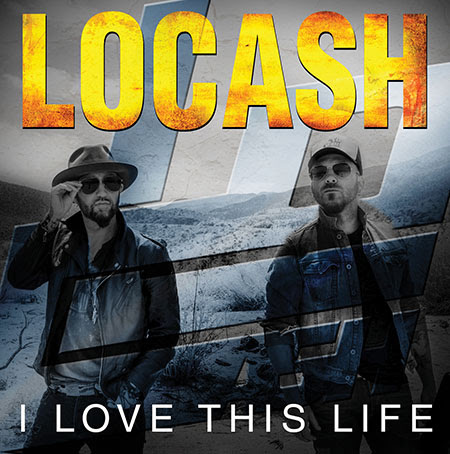March Blog Rodeo: Why Country Music Is Like the Zombie Apocalypse
11 years ago Liv Carter 3
When I first read this month’s Blog Rodeo topic, “Why does the mainstream media seem to be so in love with country music right now?”, I immediately prepared my seven-word reply: because that is where the money is. Too cynical? Anything that achieves mass popularity does so by first being appealing to a broad audience. And anything that has the attention of a broad audience is very attractive to advertisers and others seeking to monetize a trend. But, while those seven words sum it up pretty succinctly, they hide the complexity of the issue. For the long response I’ll need to draw on interdisciplinary cultural theory. So, why does country music seem to be more accepted by the mainstream media* these days? And is it really?
Let me start by talking about zombies.
Before Sheriff Rick and badass Daryl ran across our TV screens, the idea of an impending Zombie Apocalypse had already seeped back into the public consciousness, where the new trend took over from vampires and werewolves. In a fairly short time there were new TV shows, new movies, new toys and novelty t-shirts, new devoted websites, and even a reality TV series focusing on those rather impressionable paranoid people, who are in earnest preparing for the end of civilization. Zombies went from a fringe interest to a bonafide pop-culture trend.
As with zombies, so with country music.
For most of mass media’s history, trends were decided by those who controlled the media. This goes all the way back to the people who had the money and power to decide what was printed in the very first books. More recently, creators of hit TV shows fed us the topics for our conversations at work, be it 1980s Dallas, or 1990s Friends. When something new was launched, the public of course still needed to embrace it, but with a limited number of TV channels most of the trend-setting was done in Hollywood and on Madison Avenue. Over the last ten years, the expanding use of the internet has democratized the media and handed some, but not all, of this power to the public. And what is one thing the public has been paying attention to? Country music. Or, if talking about the current stars like Taylor Swift, Carrie Underwood, and Lady Antebellum, a derivative thereof.
Moreover, in previous eras, culture trends tended to stick around for as long as media outlets pushed them. But, as the speed of the internet increases, long-term trends are being replaced by short-term memes. Just in the last few weeks, a silly YouTube video by one user sparked numerous ‘Harlem Shake’ copies and helped send a forgotten song to the top of the Billboard Hot 100 chart. A few weeks from now, many will have forgotten it again.
One thing that has stayed the same is that pop-culture trends tend to reflect something about our society back to us. After the worldwide economic collapse, two big trends emerged: the Occupy movement and a renewed obsession with the Zombie Apocalypse. The downturn triggered a fear of the collapse of society, and while some used this to fuel a political protest on Wall Street, other people, some more seriously than others, went full dystopian and returned zombies to everyday conversation. The last time there was a suddenly flurry of zombie-related movies was in the 1950s, during the Cold War. You see what I mean about trends reflecting the fears of society.
The troubled economy also triggered something else for many people – a return to basics. It is this shift on which country music has managed to capitalize. While the two trends mentioned above were borne out of fear, country music’s renewed popularity came out of a desire for simplicity. Songs about an everyday simple life, falling in and out of love, partying on Saturday night and then church on Sunday, were again much more accepted. Overly loud and homogenous pop music was making way for more familiar sounds, sounds many people had grown up with. It is a trend that continues to grow still as it has blown past country music and, focusing on ever more organic sounds, more folk and roots artists are now being embraced by the mainstream.
So what about this mainstream media being “in love” with country then? The public has been listening to country for a long time. Michael Jackson, thought of as one of the best-selling artists of all time, has one album which sold over 10 million copies in the US (Thriller), Madonna has two, but Shania Twain has three and Garth Brooks four. If the mainstream didn’t develop a crush on country when they were around, why would it do so now? None of the current country stars come even close to these sales figures, and the more I considered this and looked at the claim made in this month’s discussion topic, the more I wondered: ‘But is it really?’ I found that I was struggling with the question because I don’t accept the premise.
True, country artists have wider appeal now than even five years ago. As the genre’s audience grew younger, perceptions changed, and so did appearances. People have made a big deal of the TV show, Nashville, using it as evidence that country has hit the big time. But the show isn’t about country music, it’s about celebrity culture. Nashville is about as representative of the country music industry as Stargate was of the US Air Force. And putting artists like Blake Shelton and Keith Urban on talent show judging panels also has little to do with accepting country music, but more with the fact that they both have well-connected management.
It’s not that there aren’t any positive effects. Country music artists and fans were for a long time treated with varying levels of condescension. But while your parents’ country music was performed in cowboy boots, hats, and sequined shirts, suddenly the country stars were strutting around with biker boots, wallet chains, and Affliction t-shirts. You can be a country music fan and keep your place at the cool kids table. Country moved into suburban neighborhoods and downtown highrises. Eventually, it gained a little more of a presence on our TV screens. It seemed like country music was finally being accepted, but which artists were they really talking about? Over the last two years, the most ubiquitous names have been Taylor Swift, Carrie Underwood, and Blake Shelton (and I wouldn’t disagree if someone also wanted to include Jason Aldean). The mainstream fetishizes celebrity and isn’t interested in country music, but just in its celebrities. The country artists most accepted into the mainstream were those acting the least like the typical country star; they are pop and rock stars. The new generation of country stars had realized that the way they were going to be accepted was to distance themselves from many of the things which made the country music brand unique, that the way to be accepted was to adapt and squeeze into the pop mold. But that is not true acceptance. That is not the mainstream media being “in love” with country. That is not the mainstream suddenly respecting and including country music. That is them dictating the parameters in which ‘being country’ is acceptable. And that is not love, that is exploitation.
Which brings us back to the money.
* Speaking of a “mainstream media” in a country that doesn’t really have established independent media is rather silly, but that is a topic for a different article.
Check out how others have approached this month’s blog rodeo topic:
- CMchatLive: “Insight from Country Stars like Scotty McCreery, Sunny Sweeney, Tracy Lawrence and more!“
- Urban Country News : “Why Country Music Is Like the Zombie Apocalypse“, “A Love Affair For The Ages“
- For The Country Record: “TV and Nashille: It’s Merits and Implications for Country Music“
- UKCountryMusic: “Is Country Music About To Be Mainstream In The UK?“
- Country Music Tattle Tale: “For The Love of Country Music“
- Country Music Pride: “Country Music Has A Little Something For Everyone, Traditional, Pop, Americana and More“
- Keepin’ It Country Blog: “Everyone Loves Country Music“
- Focus On The 615: “The Mainstream Hasn’t Fallen In Love with Country, Just The Opposite,” “Remember When Country Wasn’t So Cool?“
- Country Music News Blog: “The Mainstream Has Fallen For Country and I Am The Mainstream,” “The Mainstream Adopts Country Music,” “I Was Country When Country Wasn’t Cool“
Liv Carter
She holds several certificates from Berklee College of Music, and a certificate in Positive Psychology from UC Berkeley.
Her main influences are coffee, cats, and Alexander Hamilton.
Latest posts by Liv Carter (see all)
- Well yes, racism, but it’s more complicated - February 13, 2017
- Black River Entertainment had a great reason to party! - October 25, 2016
- Keith Urban returns to the States for US arena leg of his “ripCORD WORLD TOUR 2016” - October 10, 2016


